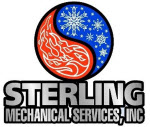We recommend Trane Programmable Comfort Controls such as the XL800 or XL600 series thermostats. Please contact your local independent Trane dealer for assistance with purchase and installation of energy-saving controls.
The major components enclosed in an air handler’s cabinetry are the blower and motor, controls, heater compartment, and an evaporator coil. This is why it is also sometimes referred to as a fan coil. A standard air handler, like the single stage furnace, delivers the same amount of airflow no matter what the temperature inside. Trane’s variable-speed air handler has Comfort-R Enhanced mode, like our variable-speed gas furnace, allowing the coil to cool down quickly and the blower to slowly ramp up and ramp down or to operate at 50 percent of the cooling air speed in the FAN ON position. This provides greater humidity control, quieter operation, maximum air circulation, temperature distribution, and air filtration for greater control of your home’s indoor environment.
The heat pump is an air conditioner that reverses the process of removing heat from the inside of the house in summer to absorbing the heat from outside air and moving it inside in winter. It is effective by itself down to temperatures around 25 to 30 degrees Fahrenheit. At that point, either a gas furnace or an air handler with supplemental electric heat will kick in and help heat your home. The Auxiliary Heat light on your thermostat will light. The heat pump will continue to operate along with the electric auxiliary heat. It will shut off when a gas furnace is energized. Emergency heat is a manual override option in the event your heat pump needs service.
With radiant heat, every object in the room becomes warm and contributes to your overall comfort. Because you’re heating more than just the room’s air, your living space maintains an even, satisfying warmth with no air currents, blowing dust, or cold spots. Unlike other heating methods, radiant heat doesn’t dry out the air. The warmth starts at your feet where it is most desired instead of blowing out of ductwork and ending up on the ceiling. With traditional hydronic baseboard heating, the hot air flows up the wall creating a convective current that can actually draw in cold outside air. Also, with radiant heat, you feel comfortable at a lower thermostat setting, so your fuel bills will be lower…a major plus! In addition, the system is silent, has only one moving part, needs minimal maintenance, operates more efficiently than any other heating system while offering superior comfort, and if that isn’t enough, you can walk around in socks all winter! Imagine stepping out of your morning shower onto a warm floor. Imagine never again sitting on a cold sofa. Imagine stretching out on a cozy floor and reading the paper, working on a school project with the kids, doing yoga exercises. These are only a few of the reasons why radiant heat has been used in Europe for over sixty years and will soon become the standard in America.
In many cases an existing domestic water heater will do the job. If the BTU rating of the heater is matched with the BTU requirements of the space to be heated, one properly sized unit can provide both space heating and domestic hot water. A boiler is normally not necessary unless the heating requirements exceed 300,000 BTU’s. In these cases, a simple mixing valve is designed into the boiler system to provide lower temperature water to the radiant floor.
In years past, some companies used high temperature boilers to send 180 degree water through radiant tubing. This excessive water temperature combined with a poorly insulated structure could cause warping or checking of hardwood floors. Because floor temperatures often exceeded 85 degrees as the floor vainly attempted to match the high heat loss of a poorly insulated structure, the result was high, wasteful energy consumption and damage to the floor. Radiant Floor Company systems are designed for low water temperatures (125 degrees) and, as a result, floor temperatures will be approximately 5 degrees warmer than room temperature. In fact, many customers have noticed that sunlight striking the floor on a bright winter day will warm the hardwood more than the radiant system. It could also be argued that, because floor temperatures are kept more uniform during all the seasons of the year, the expansion and contraction of the hardwood is minimized and a more stable and long lasting floor is the result. The same is true for other floor coverings as well. Whether it’s Pergo, vinyl, or any type of laminated floor, the low water temperatures unique to properly designed radiant heating systems keep floor temperatures well within manufacturer’s specifications.
